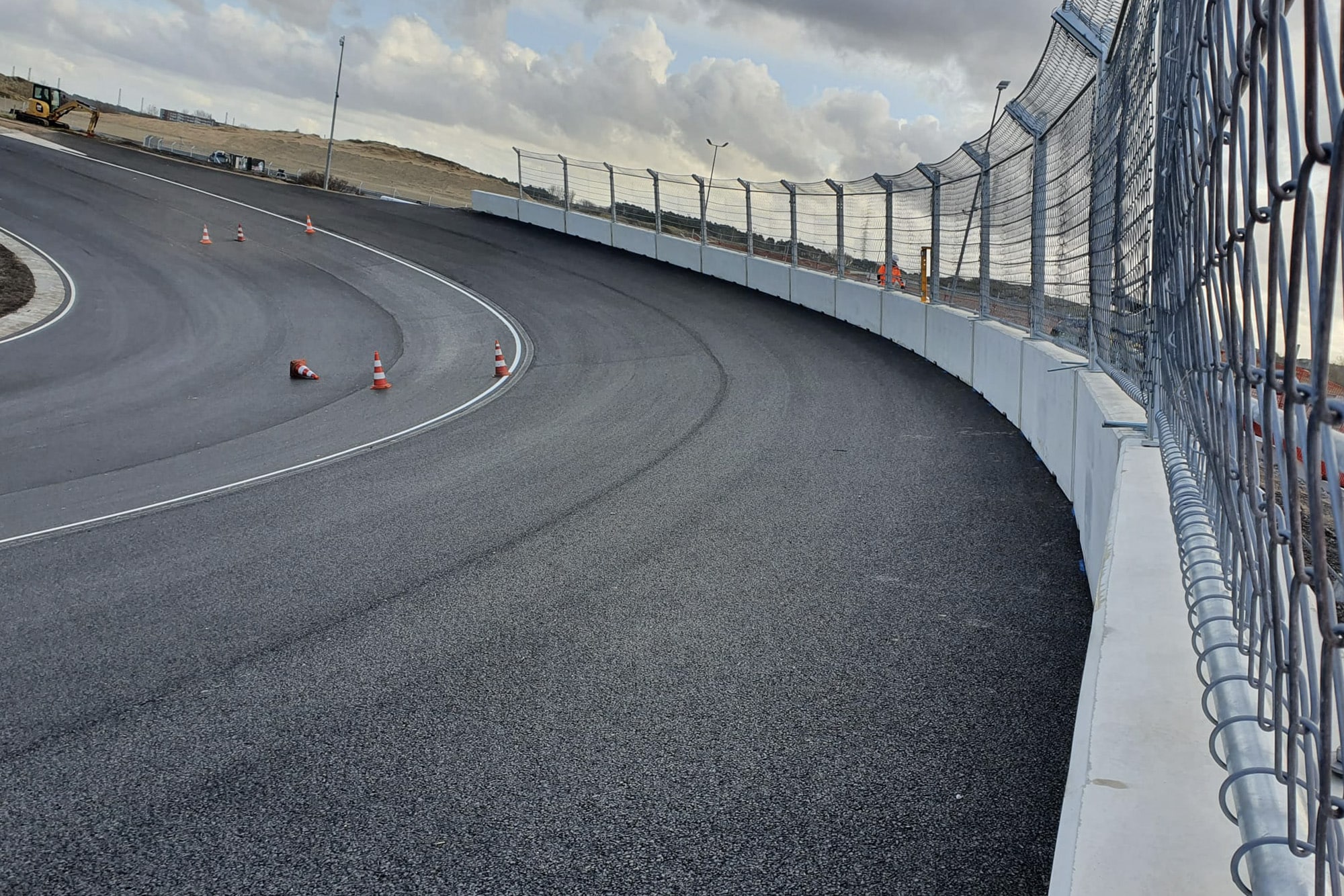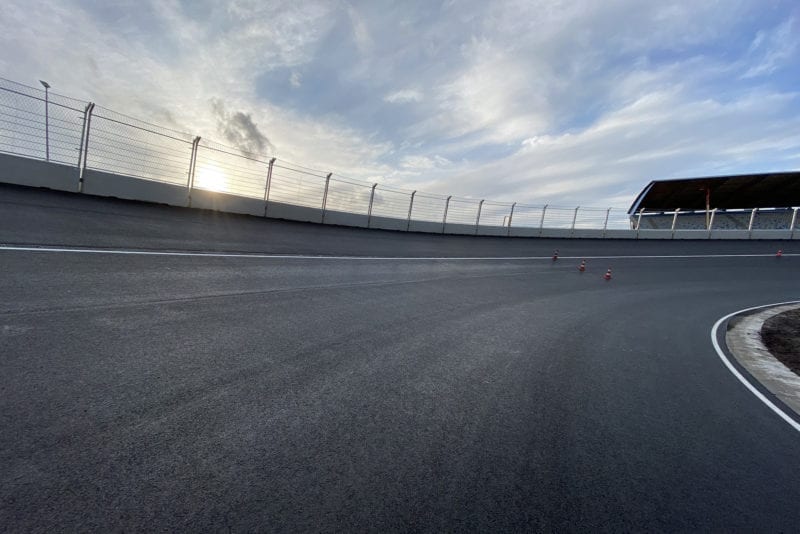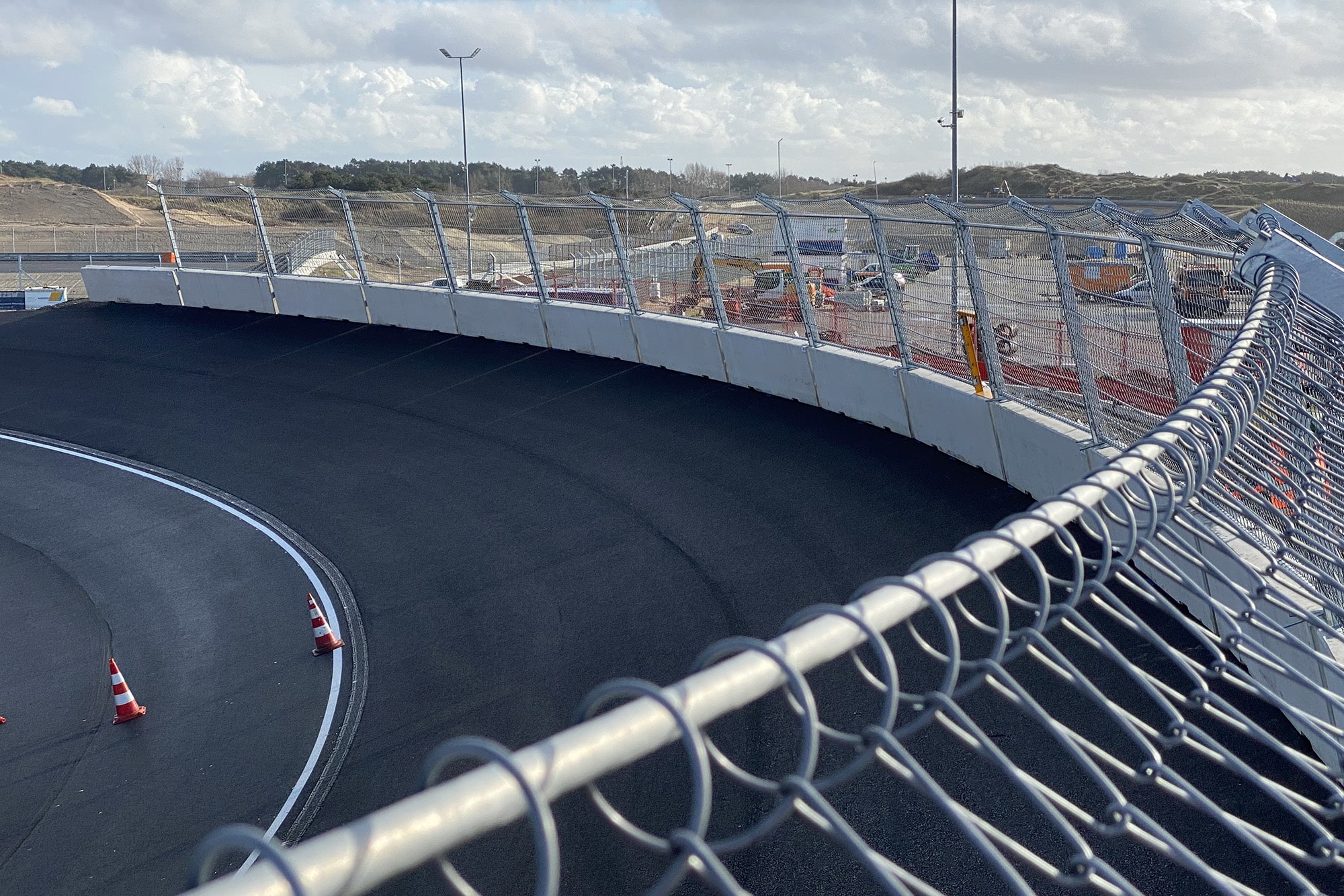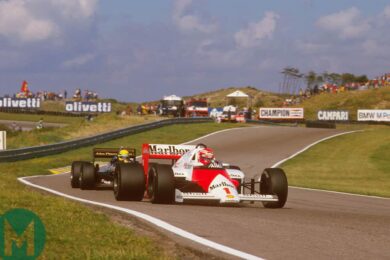“We did something that we thought would be really formidable to drive, that has no equal at any other racetracks,” said Jarno Zaffelli, Dromo’s founder. “Turn 14 is quite ample and wide, making it full throttle, whereas the transition between Turn Two and Turn Three has a lot of elevation and banking changes.
“All of your horizon is tilting, all of your perception is evolving, you feel like you are being squeezed. It’s like being in a corkscrew, depending on the line that you are following.”

Zafelli said that the banking would also test engineers, as they try to set up a car that’s not designed for banked corners.
“The challenge will be really huge because cars are not designed to sustain such a banking like that, so the teams will have to think about it,” he said. “Not only from the tyre perspective but also the suspension as well, the handling, going into Turn Two and Turn Three, and then out of Turn Four will require a setup that will be a compromise because if you want to go fast there you will have to go slow in another section.”
The final stages of construction work involved the top layer of asphalt, named ‘Flying Dutch’ after Max Verstappen, and the fences, installed by Swiss company Geobrugg, which are set at 90 degrees to the track surface to contain debris.



